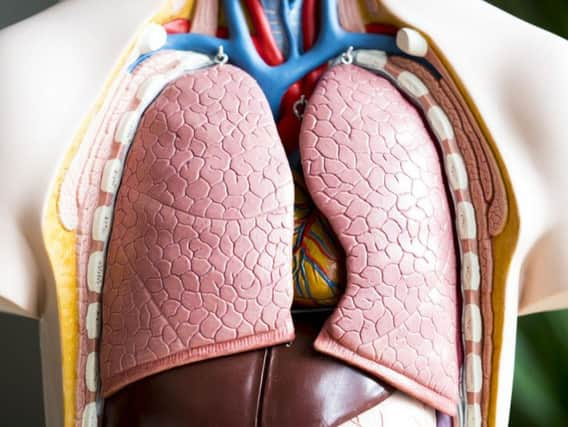Public's poor knowledge of anatomy 'hampers healthcare'


And just four out of 10 can pick out their stomach, suggests the study.
Even less - just a quarter of women and four out of 10 men - were successful at identifying the liver, despite soaring illnesses caused by drinking too much.
Advertisement
Hide AdAdvertisement
Hide AdOnly two in five knew where their spleen and gall bladder is, while fewer than a quarter can locate their pancreas despite its role in diabetes and six in ten their kidneys.
Ignorance about anatomy is endangering the effectiveness of health screening campaigns that target a specific organ, warn scientists.
They were inspired to get to the bottom of the lack of knowledge after a Prostate Cancer UK study recently found more than half of men did not know where their prostate gland was and 17 per cent were even unaware they had one.
The only organ which 100 per cent of people answered correctly was the brain, reports Anatomical Sciences Education.
Where the heart is
Advertisement
Hide AdAdvertisement
Hide AdDr Adam Taylor, an expert in clinical anatomy at Lancaster University Medical School, said: "I expected the heart to be up there with the brain, but a lot of people thought it was in the middle of the chest, instead of left of centre, perhaps influenced by Valentine's Day representations.
"The liver has had a lot of publicity because the damage alcohol can do to it, and likewise the lungs with smoking.
"But if people do not know where these organs even are, health campaigns are unlikely to have much impact on them."
Fewer than two in three people knew where their bladder is and less than six in 10 their hamstrings, with women again faring particularly poorly.
Advertisement
Hide AdAdvertisement
Hide AdDr Taylor said middle-aged people who had not gone to university scored better than young graduates.
He said: "While many of the public do not have or need formal anatomical knowledge, it is beneficial in monitoring and explaining their own health."
Gut feelings
Members of the public up to the age of 70 were asked to place 21 human body parts on a blank template.
These included the brain, cornea, lungs, liver, diaphragm, heart, stomach, appendix, bladder, kidneys, pancreas, gallbladder, spleen, adrenals, thyroid, hamstrings, biceps, triceps, quadriceps, cruciate ligament and Achilles tendon.
Advertisement
Hide AdAdvertisement
Hide AdThey were chosen based on mentions in everyday life such as keeping fit, sports injuries, TV shows and online searches for abdominal pain. The biceps and cornea were the next most correctly answered structures.
Those the public knew least about were the adrenal glands which less than one in seven could identify. Many mistakenly thought were in the neck instead of at the top of the kidneys.
Overall, men scored higher than women in identifying muscles, but not internal organs. Graduates did not score better than non-graduates.
Older people scored higher than young people, peaking in the 40 to 49 age group, which may be because this is when people begin visiting the doctor more often.
Advertisement
Hide AdAdvertisement
Hide AdPeople who had visited a healthcare professional prior to the quiz fared no better than those who had not.
Dr Taylor said the quiz revealed the public's eagerness to learn anatomy despite their limited knowledge of the human body.
He said the pilot study of 63 individuals is now being extended to involve thousands of participants to find out just how ignorant Britons are when it comes to their own body.